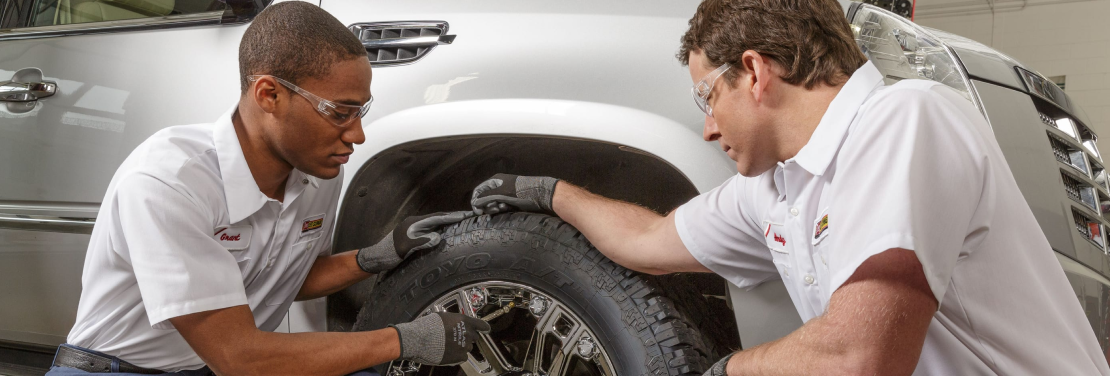Trusted Tire Shop Morris: Comprehensive Tire Solutions and Exceptional Service
Trusted Tire Shop Morris: Comprehensive Tire Solutions and Exceptional Service
Blog Article
Tire Solution: The Impact of Weather
When it comes to making sure optimum efficiency and safety and security on the road, recognizing the effect of weather conditions on tire solution is crucial. In this conversation, we will check out the intricate relationship between climate problems and tire solution, dropping light on the importance of weather-specific tire maintenance methods and factors to consider.
Warmth and Tire Efficiency
When revealed to heats, tires experience changes in performance that can dramatically influence automobile safety and security and handling. The heat created from long term driving or hot climate conditions causes the tire rubber to soften, resulting in lowered tread life and boosted wear. As the rubber ends up being softer, the tire's grasp when traveling lessens, influencing braking distances and general traction. In severe instances, too much warmth can also create tire blowouts, posturing a severe safety and security risk to the automobile and its owners.
Moreover, high temperature levels can increase the process of tire aging, causing the rubber to wear away extra rapidly. To reduce the effects of warmth on tire efficiency, motorists ought to consistently check their tire stress, turn tires to ensure also use, and evaluate for any kind of signs of damages.
Cold Weather Results
Winter conditions can have a substantial effect on tire efficiency and safety. As temperatures drop, tire rubber can solidify, resulting in reduced grip on icy or snow-covered roadways. In winter, tires may also shed atmospheric pressure more quickly, which can influence handling and gas efficiency. Furthermore, cool temperatures can cause tire sidewalls to tense, enhancing the danger of damages from pits or other roadway threats.
To alleviate the effects of winter on tires, it is important to frequently inspect tire stress and inflate them to the manufacturer's recommended levels. Using winter or all-season tires developed for winter problems can additionally improve grip and grasp on icy or snowy roadways - tire shop morris. Correct tire maintenance, consisting of routine evaluations for wear and damage, ends up being a lot more important throughout chillier months to make certain optimum performance and security
Rainy Conditions Influence
During wet conditions, tire performance and safety and security can be substantially affected by the damp roadway surfaces and lowered presence. The walk pattern of tires plays an essential role in preserving grip on wet roads. Tires with worn-out footsteps are a lot more vulnerable to hydroplaning, where a layer of water constructs up between the tire and the roadway surface, leading to loss of traction. To combat this, drivers ought to routinely inspect their tires for sufficient walk deepness and take into consideration buying tires specifically designed for damp problems.

Snow and Tire Safety
When driving in snowy problems, having the right tires can make a considerable difference in security and efficiency. Winter months tires are created with unique rubber substances and walk patterns to provide far better grip on snow and ice compared to all-season tires.
Along with utilizing winter months tires, it is crucial to guarantee they are properly blown up. Winter can trigger tire pressure to go down, impacting grip and handling (discount tires morris il). Consistently inspecting and preserving the appropriate tire stress is crucial blog for optimal efficiency in snowy conditions

Weather-Related Tire Maintenance
When faced with numerous climate conditions, appropriate tire maintenance comes to be an important aspect of vehicle safety and performance. Weather-related tire upkeep includes a variety of techniques targeted at making sure optimum tire feature and long life in different climate circumstances. One key element of weather-related tire maintenance is tire pressure regulation. Varying temperature levels can cause tire stress to differ, affecting traction and fuel efficiency. Consistently checking and changing tire pressure according to maker suggestions is important for secure driving in transforming climate conditions. Furthermore, tire tread depth plays a significant duty in taking care of different weather condition components. Tires with ample tread depth give better hold on wet or icy roads, minimizing the threat of hydroplaning or skidding. Inspecting tire tread on a regular basis and changing tires when tread wear gets to a certain deepness is important visit this page for keeping traction and security in negative weather condition. By prioritizing weather-related tire maintenance, motorists can boost security, enhance car performance, and prolong the life expectancy of their tires.
Verdict
In verdict, weather condition conditions have a substantial influence on tire performance and security (morris tire and alignment). From warmth influencing tire stress and put on to cool climate minimizing traction, it is crucial to take into consideration the climate when preserving and using tires.
In this discussion, we will discover the complex partnership in between climate problems and tire solution, shedding light on the relevance of weather-specific tire maintenance methods and considerations.

Report this page